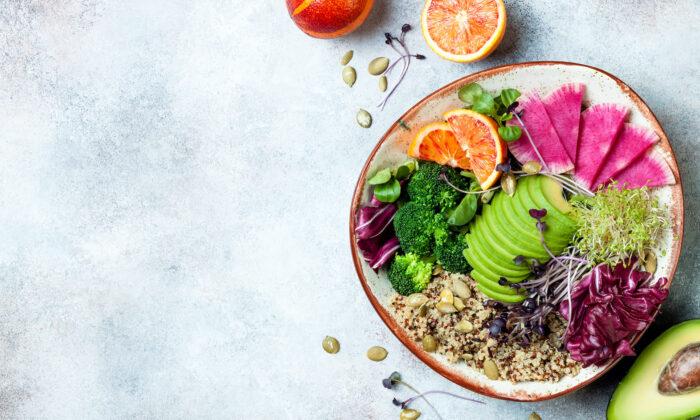A calorie is a calorie is a calorie, at least from a thermodynamic standpoint. It’s defined as the amount of energy needed to raise the temperature of 1 kilogram of water by 1 degree Celsius (2.2 pounds by 1.8 degrees Fahrenheit).
But when it comes to health and your body’s energy balance, not all calories are equal.
If every calorie in food were the same, you wouldn’t expect to see weight-loss differences among people who eat the same number of calories that are doled out in different types of food.
Dietitians like me know there are many factors that influence what a calorie means for your body. Here’s what we understand about calories and nutrition so far.
Energy Actually Available to Your Body
In the late 1800s, chemist W.O. Atwater and his colleagues devised a system to figure out how much energy—that is, how many calories—various foods contain. Basically, he burned up food samples and recorded how much energy they released in the form of heat.
Not every bit of energy in food that can combust in the lab is actually available to your body, though. What scientists call
metabolizable energy is the difference between the total energy of the food consumed and the energy that passes out of your body, undigested, in feces and urine. For each of the three macronutrients—proteins, carbohydrates, and fats—Atwater devised a percentage of the calories they contained that would actually be metabolizable. Per gram, protein has the least available energy at 92 percent, fat is in the middle at 95 percent, and carbohydrates, which convert to blood sugar, have the most at 97 percent.
According to the Atwater system, one gram of each macronutrient is estimated to provide a certain number of calories. The U.S. Department of Agriculture still uses these calculations today to come up with an
official calorie number for every food.
How Much Energy You Use
What you eat can affect what scientists call your body’s
energy expenditure. That’s how much energy it takes to keep you alive—the energy you use breathing, digesting, keeping your blood flowing, and so on—along with what you exert moving your body. You might have heard this
referred to as metabolism, though metabolism is actually a somewhat broader concept.
Diet quality can alter the body’s energy expenditure, which is also called the
thermic effect of food. For example, in one study, people eating the same number of calories per day but on either a low-carbohydrate diet or a low-fat diet had
differences in total energy expenditure of about 300 calories per day. Those eating very low-carb diets used the most energy, while those eating low-fat diets used the least.
In another study,
high-fat diets led to lower total energy expenditure—how many calories you burn—than high-carb diets did. Other researchers reported that although substituting carbs for fat didn’t alter energy expenditure, people who increased their protein intake to 30 percent to 35 percent of their diet
used more energy.
Reward centers in the brain light up when people eat high glycemic index/load foods, highlighting the
pleasurable and addictive effect of foods such as candy or white breads.
The fiber content of food is another thing to consider. Your body can’t digest fiber—found in plant foods such as fruits, vegetables, whole grains, and beans—for energy. So foods high in fiber tend to have
less metabolizable energy and can help you feel full on fewer calories.
Empty calories—those from foods with minimal or no nutritional value—are another factor to consider. Things such as white sugar, soft drinks, and many ultra-processed snacks don’t provide much, if any, benefit in the form of protein, vitamins, or minerals despite having high calorie counts. The opposite would be
nutrient-dense foods that are high in nutrients or fiber, while still being relatively low in calories. Examples are spinach, apples, and beans.
And don’t think of empty calories as neutral. Nutritionists consider them harmful calories because they can have a negative effect on health.
Some of the biggest contributors to weight gain are potato chips and sugar-sweetened beverages. On the other hand, foods that are inversely associated with weight gain are vegetables, whole grains, fruits, nuts, and yogurt.
More to Health Than Calories and Weight
It’s indisputable that for weight loss, the difference between the number of calories consumed and the number of calories exerted through exercise is the most important factor. But don’t fool yourself. While weight plays a role in health and longevity, weight loss alone doesn’t equate to health.
Yes, some high-protein diets seem to promote weight loss at least in the short term. But epidemiologists know that in areas where people live the longest—close to 100 years on average—they
eat a primarily plant-based diet, with less animal-based protein and less mono- and polyunsaturated fats.
I often hear friends or clients say things like, “It’s those carbs that are making me fat” or “I need to go on a low-carb diet.” But these complaints drive dietitians like me, well, nuts. Carbohydrates include foods like Coca-Cola and candy canes, but also apples and spinach. Cutting down on simple carbs like soft drinks, refined-flour bakery items, pasta, and sweets will definitely have a positive impact on health. But eliminating carbohydrates like vegetables and fruit will have the opposite effect.
Where your health is concerned, count more on the quality of the calories you consume than the calorie count.
Terezie Tolar-Peterson is an associate professor of nutrition at Mississippi State University. This article was first published on The Conversation. 
